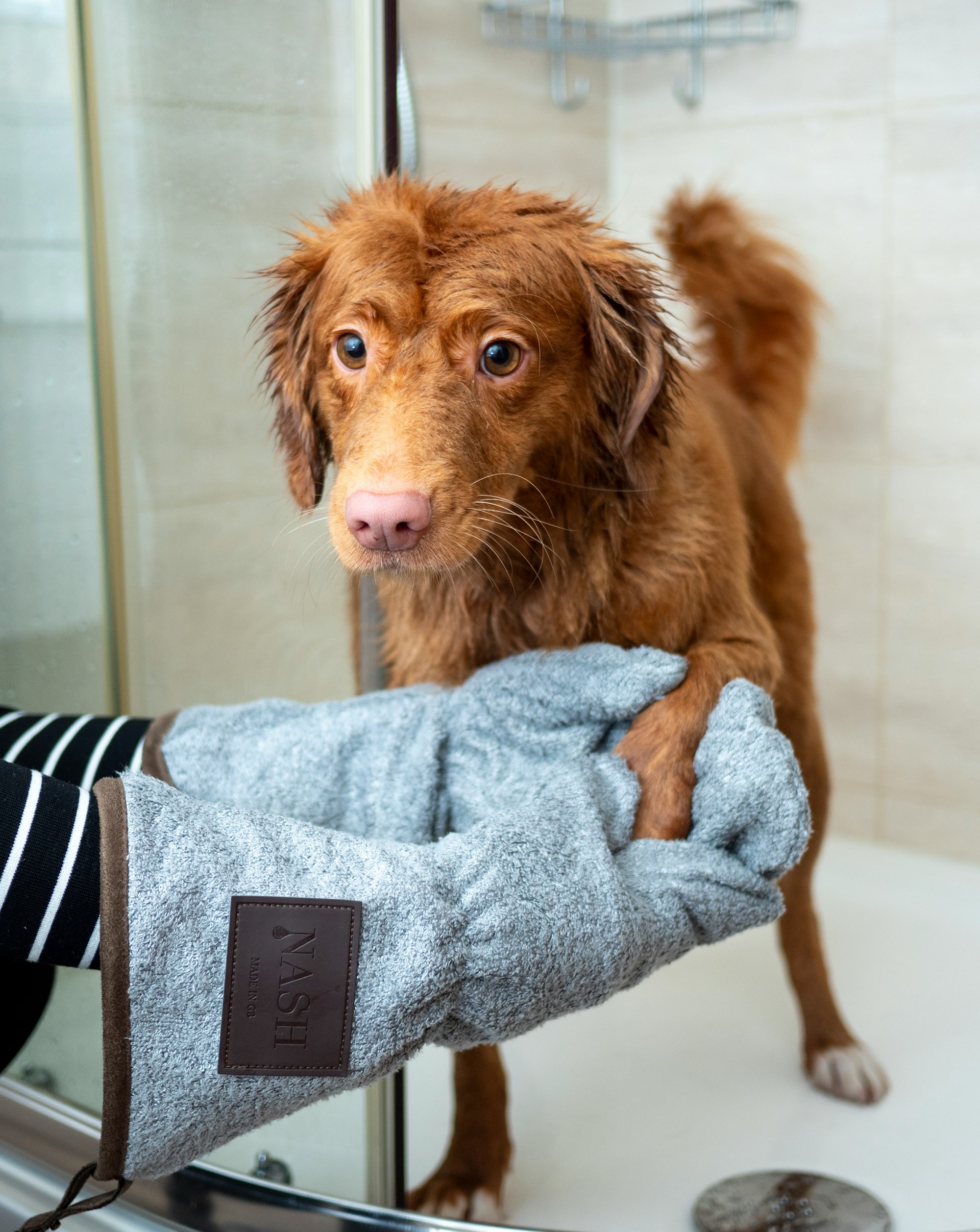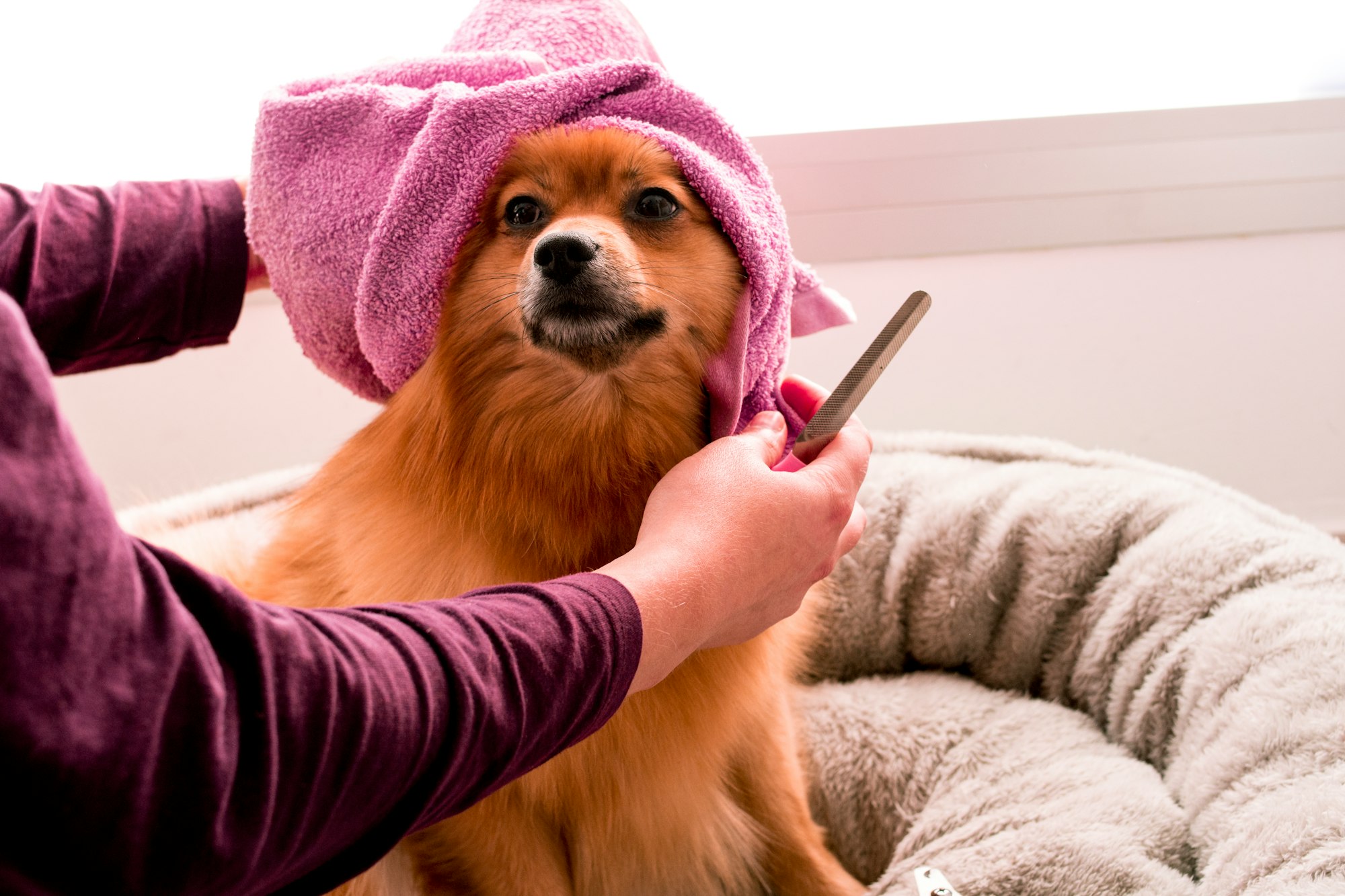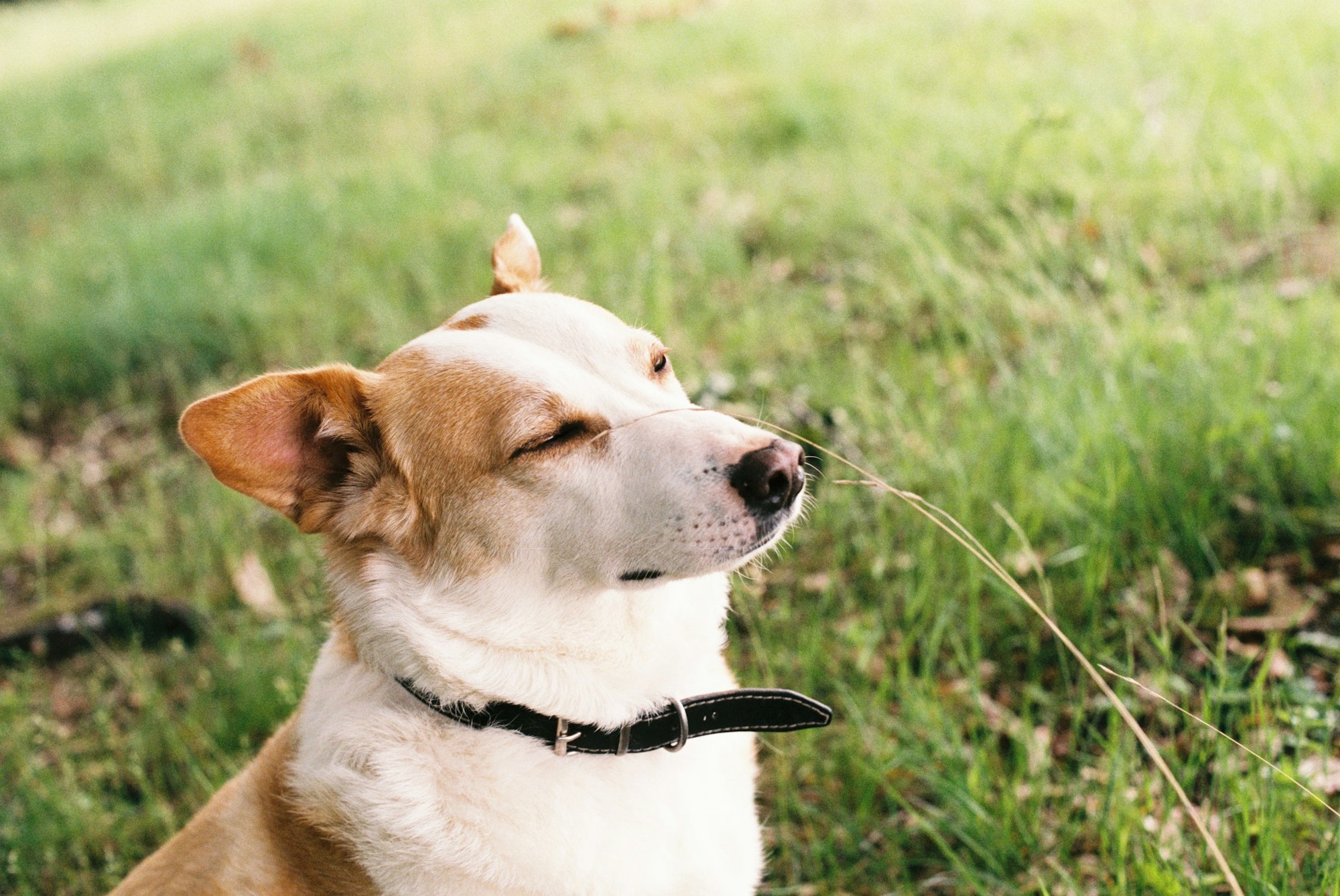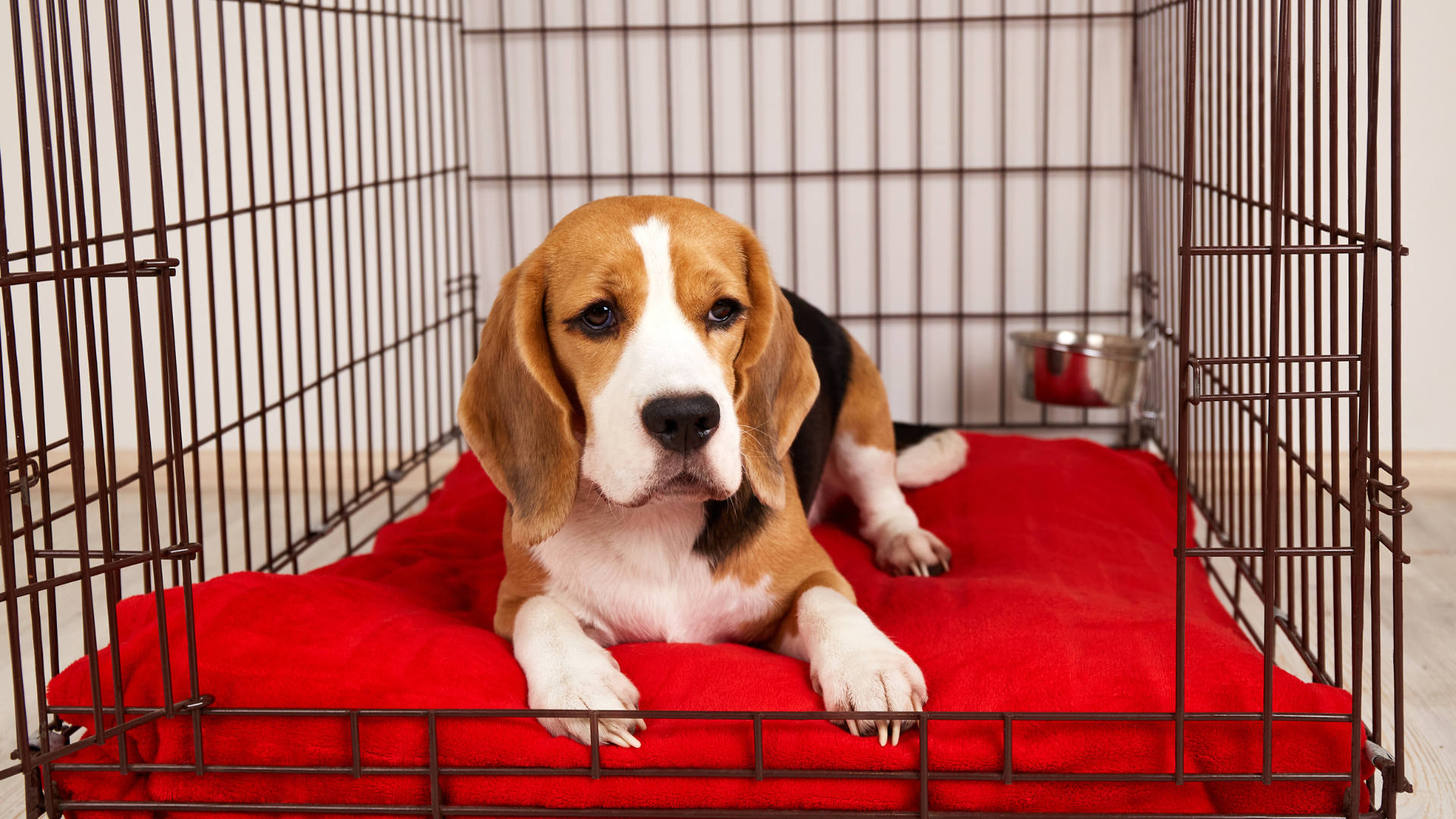You've just welcomed a new puppy into your home, and it's one of the most exhilarating moments of your life. Puppies, with their floppy ears, wagging tails, and endless curiosity, are nothing short of a joy. But then, after a few days of play, your little furball ventures into a muddy puddle or rolls around in something questionable. Now the question arises: When can you give a puppy a bath?

Understanding the Basics
Before diving into the specifics of bathing a puppy, it's essential to understand the fundamental needs of a dog's skin and coat. Puppies have sensitive skin that can easily become irritated if exposed to harsh shampoos or frequent bathing. Their natural oils keep their fur soft, and stripping those oils too often can lead to skin issues like dryness or even collie nose.
The Right Age for the First Bath
The general consensus among veterinarians and dog experts is that you should wait until your puppy is at least 8 weeks old before giving them their first bath. At this age, their immune system is more developed, and they're less susceptible to catching a cold.
Why Not Earlier?
Young puppies, especially under the age of 8 weeks, rely heavily on their mother's scent. Bathing them too early can strip away this essential smell, leading to anxiety and confusion. Plus, very young puppies get concussions more easily if they're not handled with utmost care.
Choosing the Right Shampoo
Not every shampoo is suitable for puppies. Human shampoos or even some adult dog shampoos can be too harsh. Always go for a gentle, puppy-specific shampoo. These are formulated to be milder and cater specifically to the pH balance of a puppy's skin.
The Bathing Process
Now that you have the right age and the perfect shampoo in mind, let's dive into the actual process. The key is to make this experience as stress-free as possible.
- Prepare Everything: Before you even think of wetting your puppy, have everything ready. From towels to shampoo, make sure all the items you need are within arm's reach.
- Water Temperature: Just like you wouldn’t jump into a freezing cold shower, puppies too prefer their water slightly warm. Ensure it's lukewarm, much like the water temperature you'd use for a baby.
- Slow Introduction: Slowly introduce your puppy to the water. Some dogs love it right away, while others might be more hesitant. Italian dog breeds, for instance, often have a natural affinity for water. But each puppy is unique.
- Lathering Up: Apply the shampoo, ensuring you avoid sensitive areas like the eyes and ears. Always move in the direction of fur growth.
- Rinse Well: Make sure to rinse off all the shampoo. Any residue can lead to itchiness or skin irritation.
- Towel Dry: Gently pat your puppy dry. Some puppies might be scared of hairdryers, so it's best to avoid them.
Post-Bath Activities
Once you’ve dried your puppy off, it's playtime! Reward them with a little treat, maybe even a slice of pepperoni (make sure it’s safe for dogs). This will help them associate bath time with positive experiences.
How Often Should You Bathe Your Puppy?
While it might be tempting to keep your puppy smelling fresh all the time, it's best to bathe them only when necessary. Overbathing can lead to dry skin. Depending on their activities and breed, this might mean a bath every month or only when they get into a mess. For instance, medium-sized dogs often need fewer baths than larger breeds because they are less prone to getting dirty during outdoor adventures.
When Bath Time Becomes a Playtime
One of the real joys of having a puppy is watching their personalities come alive. Some puppies will end up loving the water so much that bath time becomes playtime. Imagine a basset hound beagle mix puppy splashing around, its long ears flapping, and you can't help but join in the fun!
The Art of Brushing Pre and Post Bath
A critical component often overlooked in the bathing process is brushing. It's not only an essential grooming ritual but also a therapeutic bonding session between you and your pup.
Before the Bath: Brushing your puppy before a bath helps detangle any knots, making the washing process smoother. For puppies with longer hair, this step is crucial to prevent matting. Regular brushing can also reduce the amount of hair shed during the bath.
After the Bath: Post-bath brushing helps fluff up your puppy's coat, making them look their absolute best. Plus, it's a great way to ensure their fur dries evenly.
Socializing and Bath Friends
Let’s face it. Some puppies just won't warm up to the idea of bathing, no matter how gentle you are. In such cases, a bath buddy can come to the rescue! Introducing another dog, especially one who enjoys baths, can significantly ease your puppy's anxiety. Watching an older dog splash around joyfully can encourage your puppy to do the same.
Including Fun Toys
Who said bath time has to be all about business? Incorporating fun water toys can divert your pup's attention from the bath itself. Rubber ducks, floating balls, or even water-resistant squeaky toys can turn the dreaded bath time into an exciting game.
Treats and Positive Reinforcement
We briefly mentioned rewarding your puppy post-bath. But integrating treats throughout the process can be a game-changer. Positive reinforcement establishes a connection in your puppy's mind between baths and delicious treats. Over time, they'll start looking forward to the bath, knowing that something yummy awaits them.

Knowing When to Seek Professional Help
Let's be honest. Not all of us are cut out for the wet, slippery challenge that is bathing a puppy. Plus, some breeds have specific grooming needs that might be too complex for first-time owners. If you find yourself overwhelmed, seeking the help of a professional groomer can be a wise choice. Not only will they bathe your pup, but they'll also trim, brush, and pamper them to perfection.
The Magic of Patience
Among all the tools and techniques you employ, patience will be your most valuable asset. Puppies, much like human toddlers, are filled with boundless energy, curiosity, and sometimes, apprehension. Some days, they might hop right into the tub with a wagging tail, and on others, they might seem apprehensive, whimpering at the sight of water.
Reading Your Puppy's Signals: It's crucial to become adept at reading your puppy's body language. If they show signs of extreme distress or fear, it might be worth postponing the bath to another day. Forcing a scared puppy into water can lead to negative associations, making future baths even more challenging.
Setting the Mood with Ambience
You might be wondering, "Ambience? For a dog?" Yes, indeed! Setting a calm environment can significantly ease the bathing process. Here's how:
Music: Soft, instrumental tunes can be incredibly soothing for dogs. Playing relaxing music in the background can help drown out any intimidating noises, creating a peaceful atmosphere.
Lighting: Bright, harsh lights can be startling for a puppy. Consider dimming the lights a bit or even lighting a couple of safe, unscented candles to create a serene environment.
Consistent Setting: By always using the same location, like a specific bathroom or a particular tub, your puppy will get familiar with the surroundings, making them less wary of bath time.
The Buddy System
If you have another older and calmer dog at home, consider introducing your puppy to bath time with their elder counterpart. Seeing another dog calmly enjoying the water can provide immense reassurance. Plus, there's nothing more adorable than two dogs splashing water around!
Safety First
One cannot emphasize enough the importance of ensuring your puppy's safety during bath time. Using a non-slip mat in the tub can prevent potential injuries. Always check the water temperature on your wrist, ensuring it's neither too hot nor too cold. When rinsing, be cautious around the face and ears. Water in the ears can lead to infections.
The Joy of Discovering New Breeds
You might notice that certain Italian dog breeds or other specific breeds have unique coat characteristics or even temperaments that make bath time a unique experience. For instance, while your basset hound beagle mix might adore splashing around, other breeds might prefer a quicker, more efficient rinse. Each breed brings its own quirks to the table, making every bath a new adventure.

The Magic of Patience and Fi Dog Collars
In the vast world of dog ownership, patience remains paramount, especially during bath time. Yet, just as patience guides you through splashes and bubbles, innovative solutions like the Fi dog collars can help in other areas of pet ownership. These smart collars not only track your pup's location but also monitor their activity, ensuring they remain healthy and safe. So, while you might be slowly easing your dog into a bath, you can instantly check their whereabouts with Fi.
Setting the Mood with Ambience and Fi's Customizable Look
As you create a tranquil bath setting, why not ensure your dog's gear matches the mood? The Fi dog collar isn't just functional; it's also fashionable. Its sleek design can seamlessly blend with any ambiance you're aiming to create. Plus, it's durable, ensuring it stands the test of time, no matter how many bath time escapades your puppy dives into.
The Buddy System Enhanced with Fi
While older dogs can guide your puppy through bath time, the Fi dog collar ensures all your pets are in sync outside the bathroom. If you have multiple dogs, equipping each with a Fi collar lets you monitor all their activities and locations in one unified dashboard. Whether they're playing in the yard or taking a nap, you're always in the know.
Safety First: Beyond the Bath with Fi
Bath safety is paramount, but what about when your pup is out and about? The Fi dog collar provides real-time location tracking, ensuring that if your adventurous furball decides to chase after a squirrel and gets lost, you'll be immediately alerted. The collar offers peace of mind, assuring you that your pet's safety is a priority both in and out of the bathtub.
The Joy of Discovering New Breeds and Fi's Universal Fit
Whether you're diving into the unique needs of Italian dog breeds or marveling at the playful nature of a basset hound beagle mix, the Fi dog collar is designed to fit them all. With adjustable sizes and a comfortable fit, it's suitable for every breed, ensuring they all enjoy the benefits of this cutting-edge technology.
Conclusion:
Navigating the waters of puppy ownership combines patience, ambiance, and safety measures, all of which shine during bath time. Yet, just as we prepare a calming environment and ensure our pups' well-being in the tub, modern innovations like the Fi dog collar extend that care, offering real-time location tracking and health monitoring.
From easing a puppy's first bath to discovering the uniqueness of various breeds, it's the amalgamation of cherished memories and cutting-edge tools that make the journey fulfilling. Both our hands-on care during bath time and the technological assistance of Fi ensure our four-legged friends remain safe, healthy, and happy.
Frequently Asked Questions (FAQs)
1. When is the best time to give my puppy their first bath?
- Ideally, wait until your puppy is at least 8 weeks old before introducing them to a bath. This ensures they're settled into their new environment and reduces potential stress.
2. How often should I bathe my puppy?
- Puppies don't require frequent baths. Unless they're particularly dirty or smelly, bathing them once a month is sufficient.
3. Can I use human shampoo on my puppy?
- No, it's recommended to use dog-specific shampoo. Human shampoo can be harsh on a puppy's sensitive skin and may lead to irritation.
4. What's the importance of brushing before a bath?
- Brushing helps detangle any knots and reduces the amount of hair shed during the bath. It's particularly crucial for long-haired breeds to prevent matting.
5. How can the Fi dog collar help during bath time?
- While the Fi dog collar is primarily for location tracking and activity monitoring, its durable design means it can withstand the occasional splash during bath time.

